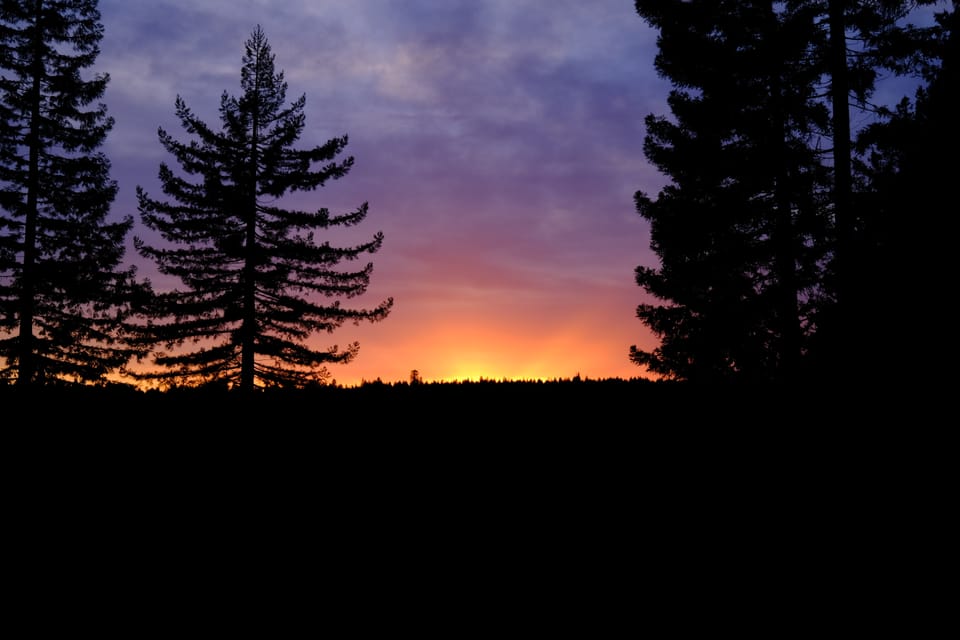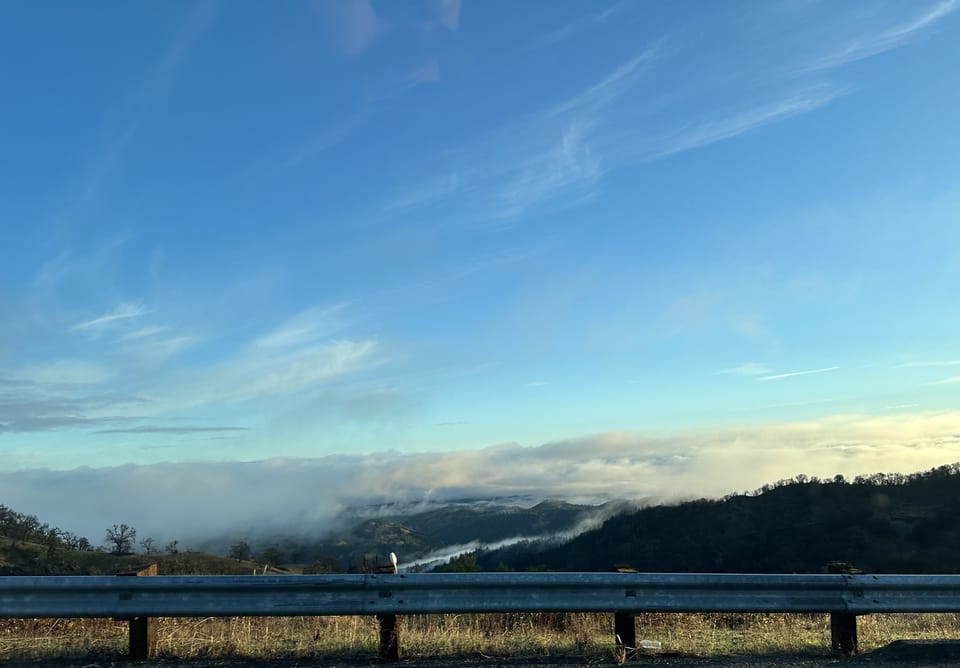Let’s get schooled
In which we learn a few things and look at a lot of lightning.

It’s sorta moving out
This storm system just didn’t want to leave. It kind of hit some areas twice.
Here's what the remarkable winter storm--that has brought rare heavy snowfall down to 1,000ft (and even lower) elevations in NorCal along with record-breaking San Joaquin Valley rainfall & blizzard conditions in the SoCal mountains--currently looks like from space. #CAwx
— Daniel Swain (@Weather_West) 5:34 PM ∙ Feb 25, 2023
These were estimated precipitation totals through ~6am Saturday.
Heavy precipitation continues to impact parts of California and the Southwest this morning. For a list of recent snow, rain, and wind reports... see the latest storm summary: wpc.ncep.noaa.gov/discussions/nf…
— NWS Weather Prediction Center (@NWSWPC) 3:07 PM ∙ Feb 25, 2023
Just some of the blizzard coverage (WaPo article too).
New round of Blizzard Warnings for California: Winter Storm Warning Sunday for the Sierra transitions to a Blizzard Warning from 10am Monday to 4am Wednesday. Travel strongly discouraged and may not be possible at times. #CAwx 2/25/2023
— Rob Mayeda (@RobMayeda) 12:34 AM ∙ Feb 26, 2023
It looks like 1982-1983 (green line) was quite the year for “California Snow Water Content”. At times this season (blue line), we’ve been at the same level or above 1982-1983, so it’ll be interesting to see where we end up.
I think we will want to revisit this in a week… the upcoming pattern will likely send the Sierra snowpack back over the 82-83 season for the Central Sierra, give a nice boost to the North, and continue to supersize the South. #CAwx 2/25/2023 #Sierra https://t.co/txm8PcgwVH
— Rob Mayeda (@RobMayeda) 2:24 AM ∙ Feb 26, 2023
An evolving forecast
This was from Saturday morning.
NEW: Derecho-like impacts can't be ruled out in Oklahoma and southwest Missouri on Sunday night.
— MyRadar Weather (@MyRadarWX) 7:06 PM ∙ Feb 25, 2023
(Remember – derechos are classified based on distance. Even if an event doesn't travel as far, the impacts locally can be the same).
Widespread 60-80 mph winds likely. Prepare now.
Here’s a bit more of a description of what a derecho is.
A Derecho is a very long lived and damaging thunderstorm with a wind damage swath that extends more than 240 miles and has wind gusts of at least 58 mph or greater along most of the length of the storm's path.
— National Weather Service (@NWS) 12:12 AM ∙ Feb 27, 2023
And then this was Sunday night. There was a ton of messaging going out on possible and confirmed tornadoes.
A nasty line of storms moving into western OK tonight with extremely high winds and a few embedded tornadoes…
— James Spann (@spann) 1:21 AM ∙ Feb 27, 2023
One last look.
A line of severe and tornadic storms pushing across Oklahoma and Kansas tonight.
— CIRA (@CIRA_CSU) 4:14 AM ∙ Feb 27, 2023
Say it with me, “evaporative cooling”
Evaporation can cause cooling, that’s pretty cool.
It’s SNOWING! ❄️
— Matthew Cappucci (@MatthewCappucci) 5:59 PM ∙ Feb 25, 2023
Textbook “evaporative cooling.” Our air was SUPER dry this morning (dew point of 19° at 7 a.m.), but precipitation falling into it initially evaporated, cooling the atmosphere (we fell 3° in 3 hours) and moistening it.
YAY DYNAMIC COOLING ☃️
I’m sorry, a what now?
A "Miller B" set-up is forecast for the Northeast as we slide into the new work week.
— weathermodels.com (@weathermodels_) 4:23 PM ∙ Feb 25, 2023
In this scenario, a low tracking over the Ohio Valley will weaken and transfer its energy to a new low offshore.
Final track of the new low will determine who sees snow and who sees rain.
MG
You’ve probably heard of Nor’easters before. Apparently, there can be two types of them (Miller type-A and B, named after the researcher J.E.Miller). They both eventually head northeast, but A’s start in the south and B’s start in the west. There are a few other differences if you care to read more about them.
El Niño article on Grist
This is a pretty detailed look at El Niño. It covers past impacts as well as potential ones moving into this year and beyond.
That makes sense
Although I was kind of hoping the answer was “magic”.
Changing colors of the aurora? It’s elemental, Watson! The color of the aurora is determined by the altitude in which it appears, as different atmospheric compounds (like nitrogen and oxygen) are found at different altitudes. More at: pwg.gsfc.nasa.gov/polar/telecons… #SpaceWeather
— NWS Fairbanks (@NWSFairbanks) 1:51 AM ∙ Feb 27, 2023
Looks magical anyway.
The #Auroraborealis has made an appearance at our office this evening. #wywx #Astrophotography
— NWS Riverton (@NWSRiverton) 3:21 AM ∙ Feb 27, 2023
That’s it fam
See you next time 💙
Weather Feed is a reader-supported publication. To receive new posts and support my work, consider becoming a free or paid subscriber. I also operate a free Weather and Fire related dashboard that might be useful to you if you’re in California.



